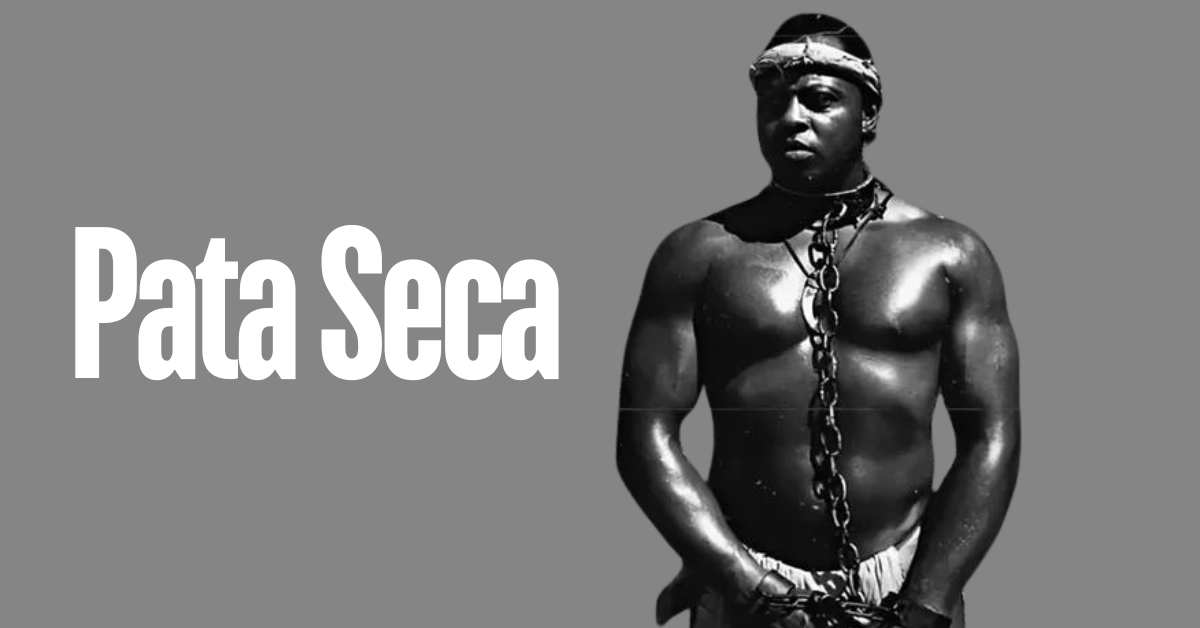Pata Seca, born Roque José Florêncio, stands out as a notable figure in the history of slavery in Brazil. His life, marked by both tragedy and triumph, offers valuable insights into the complexities of slavery and resistance. This article delves into the story of Pata Seca, examining his early life, his role as a slave, and his contributions as a freedom fighter.
Early Life and Enslavement
Background and Origins
Roque José Florêncio, later known as Pata Seca, was born into a life shrouded in mystery due to his early enslavement. Slave traders took him from his homeland at a young age and forced him into servitude. As a result, people lost the details of his origins, including information about his family and early experiences, as he was thrust into the harsh realities of slavery in Brazil.
Physical Attributes and Enslavement
Pata Seca’s imposing physical stature—standing at seven feet tall and weighing approximately 300 pounds—was a factor in his assignment as a “breeder.” The misguided belief that his physical attributes would produce strong offspring led to his role in fathering over 200 children. This role was a grim reflection of the dehumanizing practices of slavery, which viewed individuals merely as means to an end.
Life as a Slave
Hard Labor and Breeding
As a slave, Pata Seca was subjected to severe conditions and relentless labor. His primary role involved breeding, a practice that exploited his physical strength for the benefit of slave owners. This dehumanizing practice was intended to increase the slave population, reinforcing the system of slavery in Brazil.
Personal Life and Family
Despite the oppressive conditions, Pata Seca managed to carve out a semblance of personal life. He married Palmira in Pernambuco, and together they had nine of his more than 200 children. This aspect of his life highlights his resilience and the human capacity to find moments of personal connection even in the darkest circumstances.
Pata Seca as a Leader and Freedom Fighter
Role in the Quilombos
Pata Seca’s legacy extends beyond his physical attributes and personal life. He emerged as a significant leader and freedom fighter, aiding many slaves in escaping to safe havens known as quilombos. These communities were established by escaped slaves and became symbols of resistance against the oppressive system of slavery.
Education and Cultural Preservation
In addition to his role in the quilombos, Pata Seca was also an advocate for cultural preservation. Despite the severe constraints imposed by slavery, he made efforts to educate his children in their native language and cultural practices. This aspect of his life underscores his commitment to maintaining cultural identity and heritage amidst adversity.
Historical Context and Significance
The System of Slavery in Brazil
Slaveholders in Brazil brutally exploited and dehumanized enslaved individuals. They subjected them to harsh conditions, including forced labor and family separation. The practice of assigning slaves specific roles, such as breeders, reflects the extreme commodification of human lives during this period.
Resistance and Quilombos
Quilombos played a crucial role in the resistance against slavery in Brazil. These communities provided refuge and support for escaped slaves and were instrumental in the broader struggle for freedom. Pata Seca’s involvement in the quilombos highlights his role in this significant movement.
Legacy and Impact
Pata Seca’s life and actions have left a lasting impact on Brazilian history. His contributions to the resistance movement and his efforts to preserve cultural identity demonstrate the resilience and strength of enslaved individuals. His story serves as a reminder of the enduring struggle for freedom and human dignity.
Conclusion
Pata Seca’s life, marked by both extraordinary hardship and remarkable resilience, offers a profound insight into the history of slavery in Brazil. From his early enslavement and role as a breeder to his significant contributions as a freedom fighter, Pata Seca’s story is a testament to the enduring spirit of resistance and the quest for freedom.
His legacy underscores the importance of remembering and honoring the lives of those who fought against oppression and worked to preserve their cultural heritage. As we reflect on Pata Seca’s life, we gain a deeper understanding of the complexities of slavery and the strength of those who resisted its injustices.
Read More Here: Trivise/General








